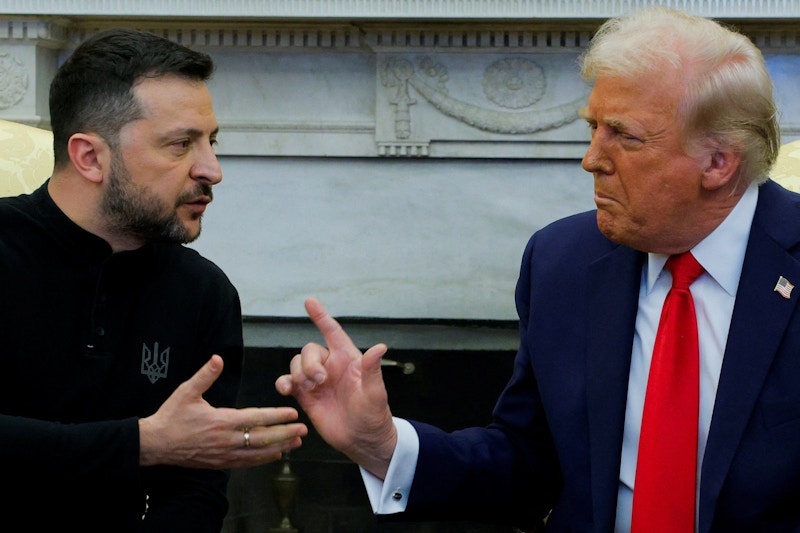The public heated conversation between Ukrainian President Volodymyr Zelenskyy, US President Donald Trump, and US Vice-President J.D. Vance at the White House on the last day of winter 2025 has become a historic turning point. At the same time, it solidified the emerging trend of the US distancing itself from Europe, a shift that began with Trump’s second presidential term, CNN reports.
On 28 February, Zelenskyy had an emotional discussion with Trump and Vance regarding Russia’s war against Ukraine. Despite Zelenskyy’s repeated statements that Kyiv wants peace and the absence of such statements from Russia, Trump accused the Ukrainian president of lacking desire for peace and ordered the Ukrainian delegation to leave the White House after the conversation turned to security guarantees, which the US has not specified since the talks between Washington and Moscow began. Currently, all that the US and Russia have agreed upon is the restoration of diplomatic relations, which, according to American intelligence reports, Russia likely plans to use to return its spies to the US.
Analyzing events over the past three days—not only the Oval Office dispute but also the emergency summit of European leaders in London—the report has outlined five key takeaways:
US-EU rift deepens
The unprecedented scene in the Oval Office shocked Ukraine’s partners but aligned with recent weeks’ broader trend of fundamental shifts in US-European relations. Under the “America First” doctrine, the Trump administration has reversed NATO’s longstanding policies, outright rejecting Ukraine’s future membership in the alliance.
Moreover, the US has confirmed that European and Ukrainian security is no longer a priority in its foreign policy. J.D. Vance even accused Europe of abandoning democratic values due to its reluctance to cooperate with right-wing populists, calling this a bigger threat than Russia.
Europe strengthens its stance
As with Trump’s earlier remarks calling Zelenskyy a “dictator,” the White House dispute prompted an immediate show of support for Ukraine from European leaders.
On 2 March, an emergency security summit in London saw European nations agree to ramp up military aid to Ukraine and increase defense spending. Additionally, discussions on a European-led peace initiative for Ukraine gained serious traction.
New peace plan emerges
With Trump increasingly unwilling—or unable—to secure a reliable and just peace for Ukraine, Europe is stepping in. France and the UK have begun forming a coalition of nations ready to participate in developing a peace plan and ensuring post-war security guarantees.
“And it remains to be seen whether this proposal has legs with the White House, which has pursued direct peace talks with Moscow that currently do not include Ukraine or Europe,” said the report.
US support remains crucial
Despite these developments, the London summit underscored that US involvement in guaranteeing the peace plan remains essential for many European countries.
Victory for Putin
The Kremlin has been relatively restrained in commenting on the Oval Office dispute. However, Russian propaganda and officials have openly celebrated the fallout.
Moscow now anticipates intensified negotiations with the Trump administration on restoring US-Russia relations. A Trump-Putin summit is also expected to take place soon.
Related:
- US officials warn Trump-Putin talks could return Russian spies to American soil
- ISW: Kremlin dismisses US terms, demands Ukraine cede non-occupied territories
- Trump rules out Ukraine’s NATO membership, pledges to get “some land” back
- I can’t believe I said that: Trump doesn’t remember calling Zelenskyy “dictator”
- Biden, Obama, Trump: Different presidents, same Russian reset trap




